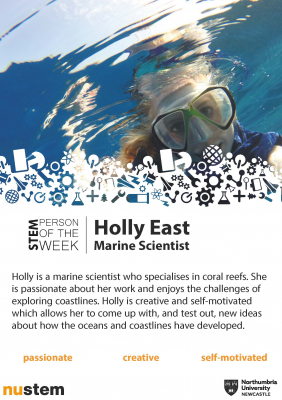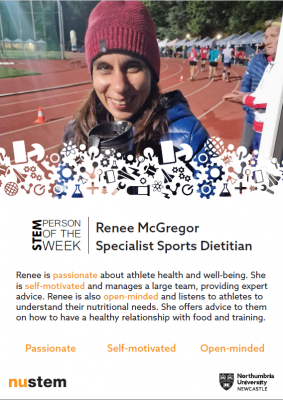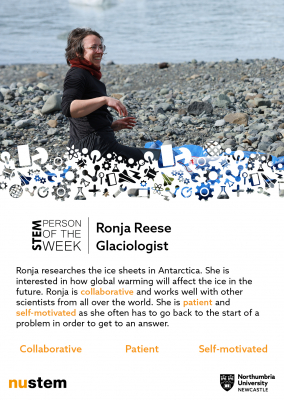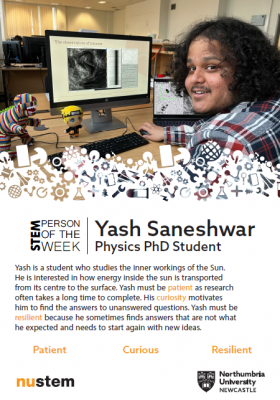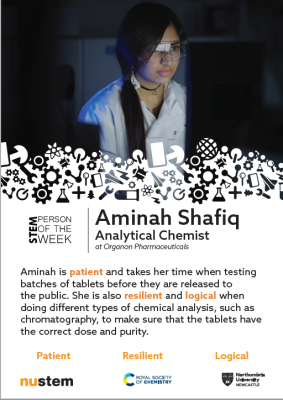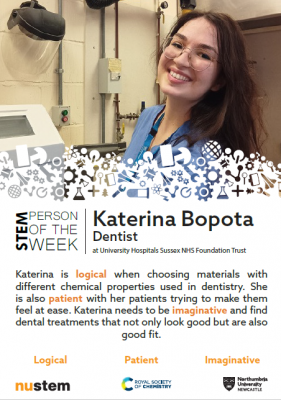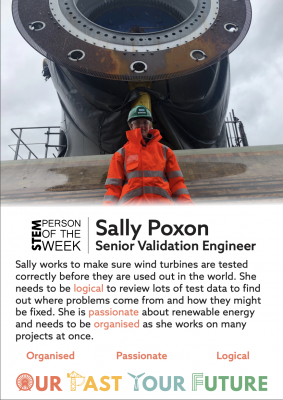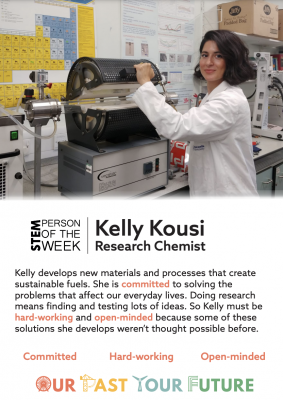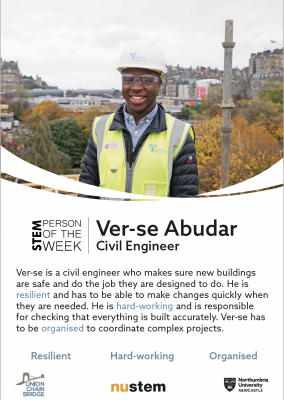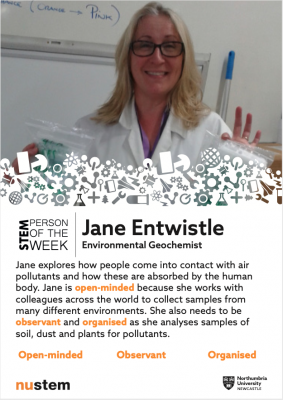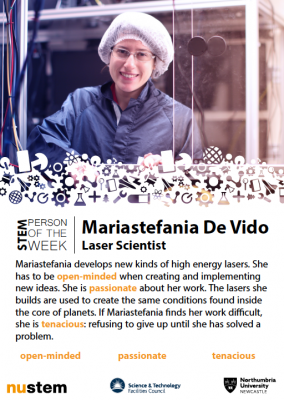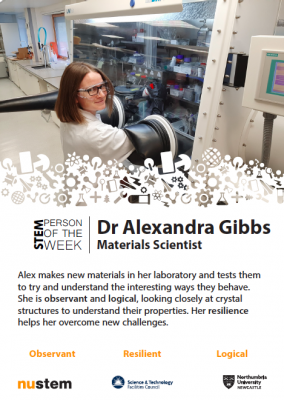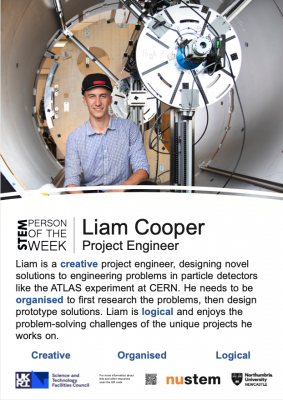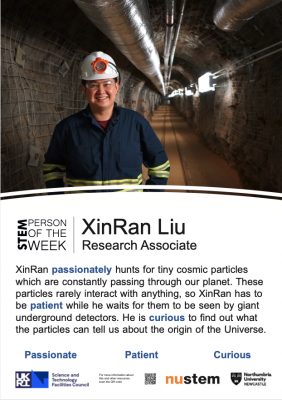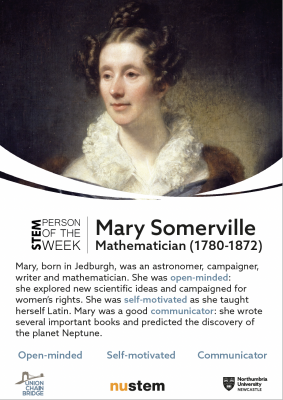STEM Person of the Week
Introducing STEM Person of the Week
Welcome to STEM Person of the Week – a STEM engagement activity that’s been shown to reduce children’s stereotypes of science and scientists by providing counter-stereotypical character attributes through a set of diverse STEM role models.
This resource aims to equip teachers with everything they need to effectively run this 5-week intervention in their school setting. The resource is simple to use and suitable for children and young people. Primary schools have used the resource for children aged 5 – 11, and secondary schools have used the resource with young people aged 11 – 14.
In fact, we recommend that you run STEM Person of the Week with your whole school or whole year groups; this way, children, young people and teachers can share what they’re learning beyond the classroom and into their social spaces and staff room.
Here you’ll find:
- Links to the resources which you can download and print
- Aims, background and research
- Guidance for teachers who want to deliver in their school
Guidance for Teachers
STEM Person of the Week is a set of five carefully chosen STEM role models that reflect diversity in the skills needed in the STEM workforce and the people who work in STEM. The intervention is 5 weeks long, and each week a new STEM worker is showcased to the children in classrooms and across the school. Each STEM person has 3 characteristics that they think are important for them to do their job. In each set of cards, the children are exposed to 15 characteristics (see table), to provide a counter-stereotypical vocabulary which better reflects the realities of working in STEM.
No one person will claim to have all of these characteristics, but by introducing such a range we hope children will see that they share some of the most important skills that scientists need. You’ll also notice a very deliberate omission from the list: intelligence. One of the most common stereotypes that exist about scientists are that they have genius-like levels of intelligence. We understand that intelligence is important in science, but don’t want it to be a barrier to children who are interested but may not feel as though they are clever enough – not every one who works in STEM is an Einstein.
| Observant | Open-minded | Committed | |
| Creative | Imaginative | Patient | Collaborative |
| Resilient | Communicator | Passionate | Organised |
| Curious | Self-motivated | Hard-working | Logical |
Download the resources
We currently have 15 sets of STEM Person of the Week cards which you can download and use in school.
Each set includes:
- Printable postcards
- Printable posters
- PowerPoint Presentation of the resources
We’ve separated the sets of cards into ‘General sets’ which contain a mix of STEM jobs from different sectors and ‘Specialised sets’ which contain cards related to specific organisations, or which contain a slightly narrower range of types of job.
Click the links to download the files from the Northumbria University Knowledge Bank.
General Sets
Northumbria University 2025 set
Job roles included in this set are:
Neuroscientist
Specialist sports dietician
Arboricultural consultant
Glaciologist
Science explainer
Northumbria University (set 3)
Job roles included in this set are:
Mathematician
Physicist
Glaciologist
Professor of Digital Learning and Play
Science Communicator
Northumbria University (set 2)
Job roles included in this set are:
Architect
Mechanical engineer
Physics PhD student
Social scientist
Technical manager
Northumbria University (set 1)
Job roles included in this set are:
Surfaces scientist
Physicist
Marine scientist
Geophysicist
Palaeontologist
Specialised sets
Chemistry careers (set 1)
Job roles included in this set are:
Analytical chemist
Medical chemist
Value communications scientist
Lecturer
Research & Devevelopment technician
Chemistry careers (set 2)
Job roles included in this set are:
Dentist
Analytical development placement student
Neuroscientist
Manufacturing lead chemist
Apprentice lab technician
Our Past, Your Future (Year 1)
Job roles included in this set are:
Architect
Senior validation engineer
Clinical support worker
Archaeological science advisor
Veterinary surgeon
Our Past, Your Future (Year 2)
Job roles included in this set are:
Research chemist
Collections conservator
Design engineer
Structural engineer
Behavioural scientist
Union Chain Bridge (Year 1)
Job roles included in this set are:
Marine biologist
Geotechnical engineer
Computer-aided designer
Civil engineer
Stone carver
MANAPRE Project
Job roles included in this set are:
Environmental geochemist
Environmental scientist
Paediatrician
Urban sustainability scientist
Air quality scientist
STFC (set 1)
Job roles included in this set are:
Laser scientist
Physicist
Electronic engineering apprentice
Instrument scientist
Satellite engineer
STFC (set 2)
Job roles included in this set are:
Materials scientist
Software engineering apprentice
Accelerator technician
Facility scientist
Polar geologist
UKRI Particle Physics (set 1)
Job roles included in this set are:
European communications manager
Electronics technician
Senior detector scientist
Project engineer
Beam physics operations section leader
UKRI Particle Physics (set 2)
Job roles included in this set are:
Senior science technician
Particle physicist
Science communication placement student
Deputy IT service delivery manager
Healthcare lead
UKRI Particle Physics (set 3)
Job roles included in this set are:
Electronics technician
Research associate
Mechanical engineer
Software engineering apprentice
Computing liaison for CMS experiment
Union Chain Bridge (Historical set)
Job roles included in this set are:
Geologist
Mathematician
Botanist
Engineer
Civil Engineer
Aims, background and research
STEM Person of the Week (SPOTW) has been created by the NUSTEM Group at Northumbria University. We’re a group of STEM Outreach practitioners and researchers who are looking to increase diversity within STEM. We do this through evidence-informed practice, working with children and their key influencers (parents and teachers) from pre-school to post-16. SPOTW was created in partnership with one of our partner primary schools, who piloted the first iteration of the resource.
We know from our own research that, when asked to describe scientists, children use a limited and very stereotypical vocabulary. In our surveys, when asked to write 6 words to describe a scientist, over 40% of the total words used were some sort of stereotype: crazy hair, explosions, lab coats, genius, etc. The SPOTW resource is designed to counter this vocabulary through a more nuanced set of attributes that scientists themselves use to describe their characteristics.
After the pilot, we went back into the primary school to see whether the children’s narrow, stereotypical view of scientists had changed. We were surprised by just how effective the intervention had been. One year after the SPOTW project, children were using significantly fewer stereotypes and significantly more positive characteristics to describe scientists. Our hope is that in the long term, this resource will help children see that the characteristics you need to be a scientist match with characteristics that they see in themselves. This increased affinity with STEM characteristics may increase their likelihood of studying STEM subjects and go into STEM careers.


